Knife 31 – Santoku – With Hand Sanding Details
The Santoku is a general-purpose kitchen knife originating in Japan. Its blade is typically between 5 and 8 in long, and has a flat edge and a sheepsfoot blade that curves in an angle approaching 60 degrees at the point.
Knife 31 – Santoku – has purpleheart and maple scales with G10 spacers.
3/32” 1095 steel. 7″ blade.
The next pictures show some hand sanding. When hand sanding all you need is a piece of scrap hardwood or metal about 12” long and 1 ½” to 2” wide. Wrap the sandpaper around the wood and hold the sandpaper tight with you thumb and finger. I typically begin sanding with 80 or 100 grit, but this will also depend on the finish as it comes off the grinder. As your grinding technique gets better, and you find the right combination of belts for your metal, style and finish desires, you will find hand sanding gets easier and shorter. Progress through the grits. At 600 grit you’ll start to see some “polish”. You can sand through 3000 grit if that is the desired look or you can stop at any point you think you’ve reached what you like.
There are so many ways and so many opinions on how a knife should be finished. Typically however you can stop sanding somewhere between 320 and 600 grit. You can also use conditioning belts. The conditioning belts will save you a bunch of hand sanding work. There are trade offs and it is mostly personal preferences. You will need to try different techniques to see what YOU like.
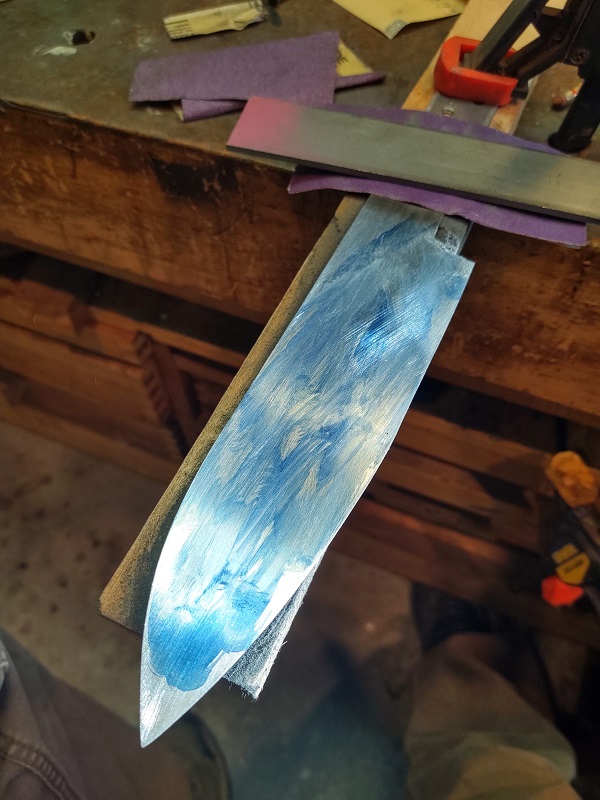
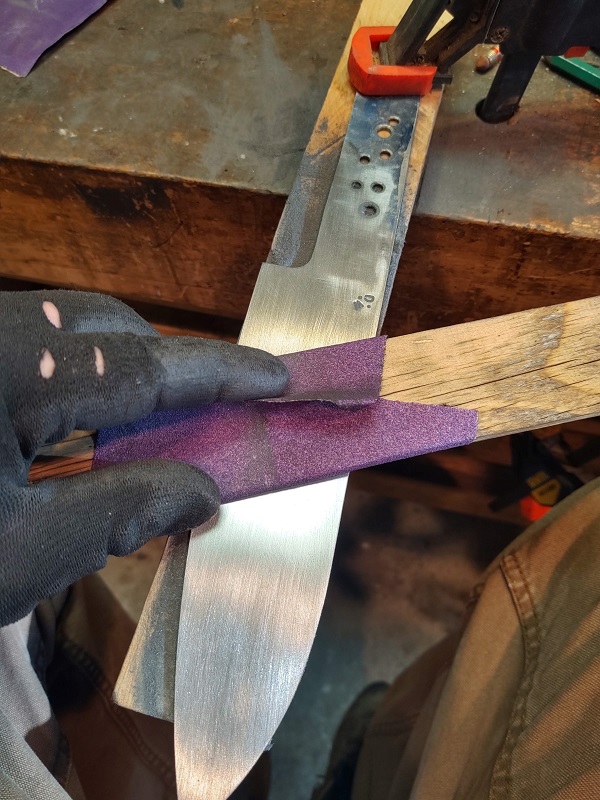
Notice here i had not build the knife vise yet. That’s really not much of a problem. The knife vise just adds a Little more convenience.
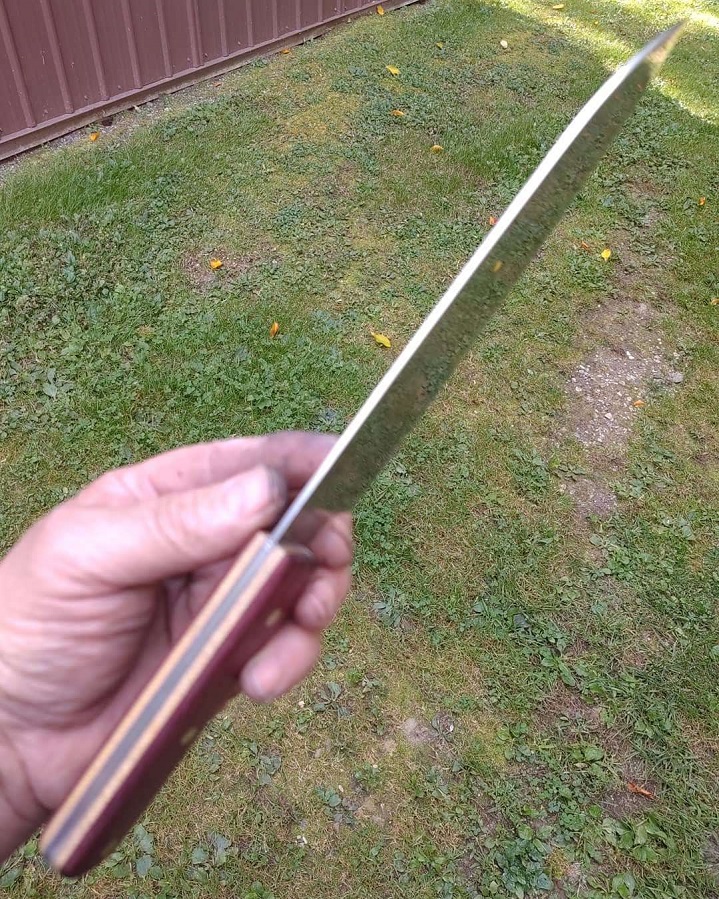
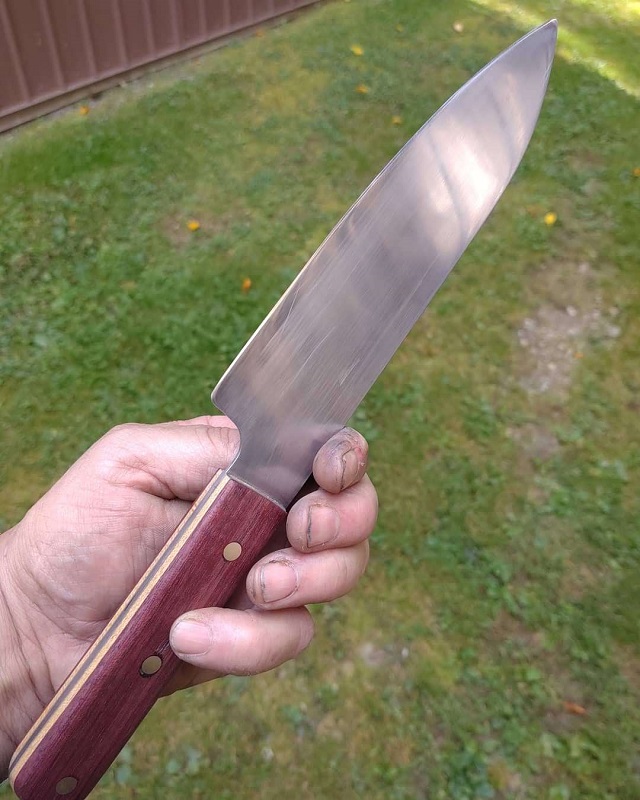

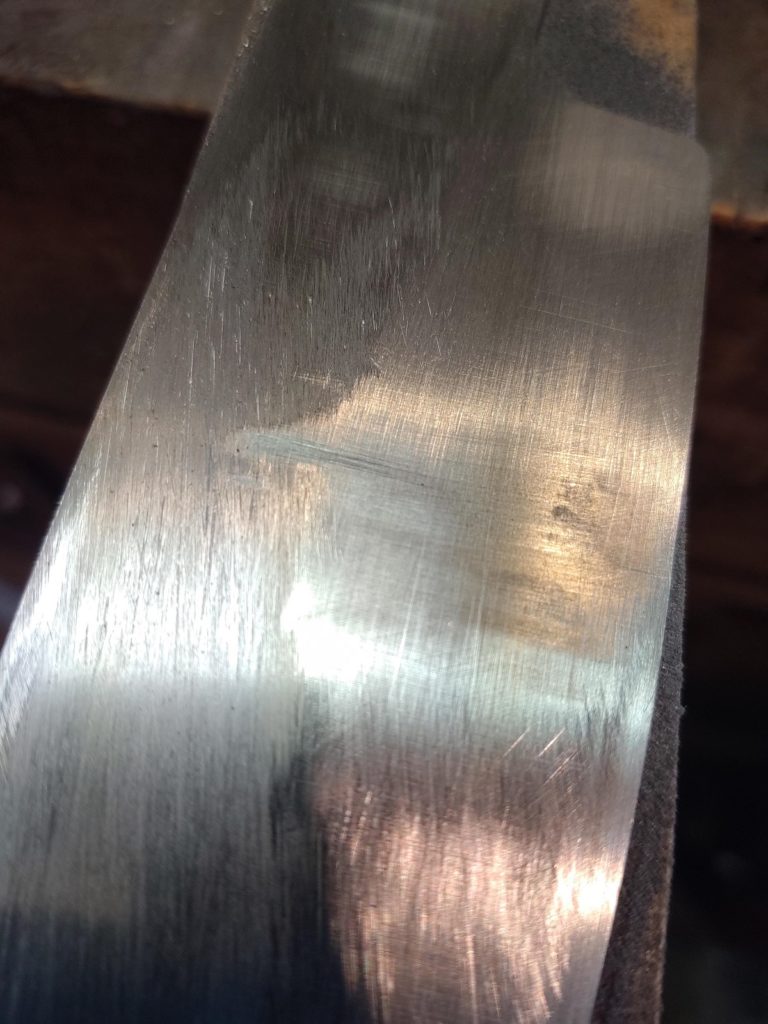
Ideally you want a kitchen knife of this style to have a blade that starts 1/8” thick by the spine, and tapers down linearly so that the width goes to zero at the edge. That means removing metal in a consistent fashion on both sides of the knife.
The first few times you do this you may wind up with the spline being about 1/8” thick part way down, then it started tapering to an edge. The closer to the spline this taper stats, the better the knife will work.
This is where grinding experience helps, and it will come in time. You can help your odds but going slow and checking your work often. As you grind, use pressure to “push the grind line in the direction you need it to go. Use a sharp belt if you are using a belt grinder.
And remember, if you sharpen all the way to a crisp sharp edge before heat treating, it could be (probably will be) ruined when you heat treat your knife and will increase the likelihood that the blade will warp.
________________
As an Amazon associate, we earn income from qualifying purchases when you click on a link. Your link clicks help us fund our website.________________

[…] Hand sanded the knife. I started with 100 grit and went to 600 grit I found a piece of brass to make the finger guard. I used the milling machine to cut out the finger guard but drilling a couple holes and filing with a round or needle nose file works as well. […]